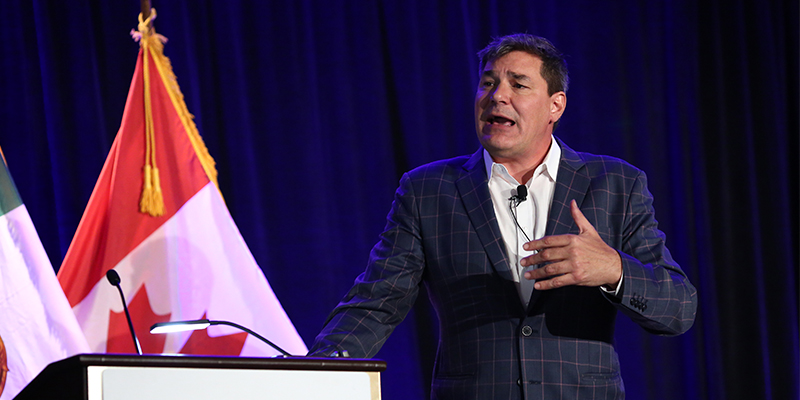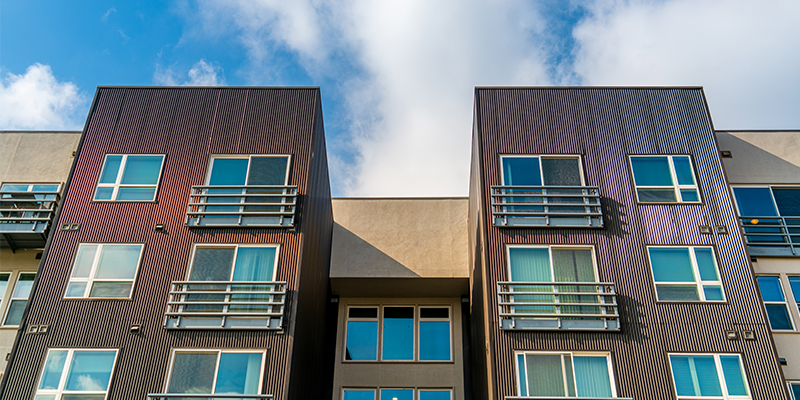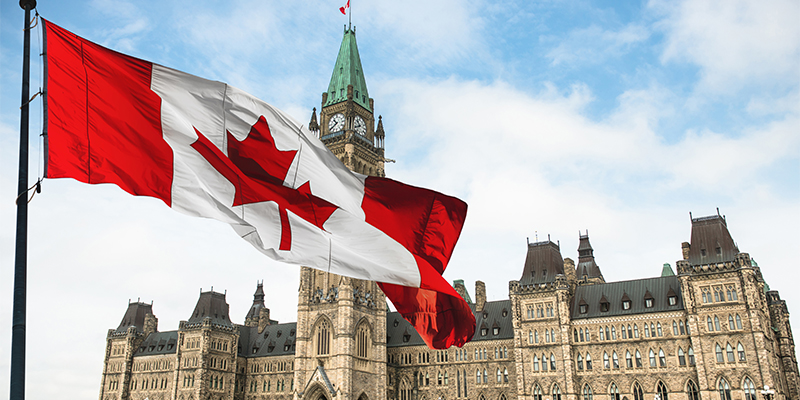“What’s happening in the economy overall is complex,” said Christopher Thornberg, Ph.D., founding partner of Beacon Economics and keynote speaker at NAIOP’s I.CON West: The Industrial Conference this week in Long Beach, California. “Fourth quarter 2021 GDP [gross domestic product] was 6.9% and February unemployment was 3.8%.”
Those numbers look good, he said, but tell a different story than the media and even some news from Capitol Hill, both of which paint a much more dire picture of the economy. “Beware of the narrative,” he warned.
The short of it, Thornberg said, is that the COVID-19 pandemic has been devastating for many reasons, but history shows that natural disasters such as these have little long-run economic impact. Two years have been filled with negative news stories about the global decay brought on by the pandemic, and this has driven fiscal and monetary policy reactions that have been excessive and are overheating the economy from consumer spending to asset markets. Risks of both inflation and a budget deficit may expand in the near term.
The pandemic will yield longer impacts too, he said, but Thornberg dismissed the “new normal” that is mentioned in nearly every news story. “It has accelerated underlying trends that were already in place, with huge implications for labor markets, land use, retail channels, housing and debt,” he said. Labor markets have flipped – now there’s not a shortage of jobs, but a shortage of workers.
There’s been much debate about the shape of economic recovery, and Thornberg believes it’s a V-shape due to a very short period of recession of only two months, followed by a voracious bounce back. It’s been an uneven recovery, though, with supply not able to keep up with demand. “Look at the auto sector,’” he said. “Sales collapsed in 2020-2021 because manufacturers couldn’t build enough. Data shows that up to 2.5 million additional automobiles could have been sold in the U.S. if supply could have kept up with demand.”
Domestic supply problems were caused by “just in time” inventories and bad forecasts, excessive demand and labor shortages, Thornberg surmised, and global capacities were also impacted by COVID-19, slowing shipping and creating delays that cascaded quickly to port backups, mostly notably at the West Coast ports of Los Angeles and Long Beach.
Financial support provided by various stimulus packages has been excessive, said Thornberg, noting that while in the last two years Americans collectively lost $800 billion in income, the federal government directly gave Americans more than $2 trillion in stimulus funds. This fiscal overreaction, he said, yielded much higher savings for Americans who weren’t traveling or spending large amounts of money on cars, campers and other big-ticket items that were stalled by the supply chain. As a result, collective household net worth increased $30 trillion – that is a 25% increase in average household net worth in just two years.
One of the biggest economic challenges is the labor shortage and the inability of businesses to hire enough workers. “There’s a reduction in labor demand, but also a great demand in labor supply,” Thornberg said. Part of the issue is based on demographics, and the population pyramid has taken a new shape as baby boomers, many raised in large families, built their own families with far fewer children. “This leaves us with a profound problem, and we are seeing a decline in the number of people in their prime working years. It took the pandemic to speed it up,” he said.
While some news stories blame the labor shortage on COVID-19 fears or issues keeping people out of the workforce, many workers simply retired. Some of the greatest shortages are in health care, retail trade, manufacturing and food service industries.
The economic wage gap isn’t an issue for workers as much as it is for employees. Beginning in 2015, the earnings of people in the bottom quartile of labor market started growing faster than any other group, so income inequality was falling. “The acceleration of earnings of those in the bottom quarter has never been better, and the entire concept of economic development has been flipped on its head,” he said.
Expanding a workforce is harder than it might seem. “Workers want more than pay – they aren’t always just working for a paycheck,” Thornberg said. Ideas include attracting workers from other countries or other states, raising participation rates among the existing population, and productivity enhancements through capital investments and skill training.
State migration patterns show the greatest declines in the coastal states of California, Maryland, Massachusetts, New Jersey and Connecticut, but also Midwest states including Ohio and Illinois, as well as North Dakota and Kansas. The biggest gains are largely in the Southern states of Tennessee, North Carolina, South Carolina, Florida, Alabama and Arkansas, in addition to South Dakota, Arizona, Oregon and Idaho.
What does this all mean for commercial real estate? Rents are rising and vacancies are declining in several products, and industrial remains the darling, particularly in the Southern California market. Retail remains flat but is not cratered. Both industrial and retail are being buoyed by the excessive amount of spending.
“Office is still a bit of a hubbub,” Thornberg said, mainly because of the increase in employees working from home. “Prior the pandemic, about 10% of employees worked from home, but that number is expected to be around 30% post-COVID,” noting that employers are going to have to figure out a hybrid approach. Some companies leased Class A space in downtown markets when rents dropped due to a sudden influx of available inventory, so although there could be more jobs in urban central business districts, there will be fewer workers since nearly one-third could be working remotely on any given day.
Economically, Thornberg says that excessive monetary policy is going to result in a huge downside and the U.S. has picked up $10 trillion in debt since 2014. Inflation has expanded due to too much money infused into the economy, creating a money illusion as real income and wealth have fallen, asset bubbles are beginning to form, and long-term investments – like real estate – become difficult to cost out.
“It’s the long run that still matters,” Thornberg concluded, noting that a full recovery is hampered not by lack of demand but by lack of supply, as well as a shortage of workers. His outlook is that the economy will stay “hot until it’s not,” remaining heated for the next year. Inflation will persist and it’s unclear when rates will reflect reality, although it’s safe to expect a crash to come, driven by a combination of tight federal budget and inflation.
This post is brought to you by JLL, the social media and conference blog sponsor of NAIOP’s I.CON West 2022. Learn more about JLL at www.us.jll.com or www.jll.ca.









